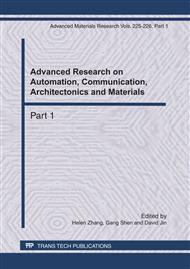p.212
p.216
p.223
p.228
p.234
p.239
p.243
p.247
p.251
A Real Option Model Suitable for Real Estate Project Investment Decision
Abstract:
Real estate investment is distinctively different from others with its high input capital, long period of recycling, huge fluctuation of house price and high sensitivity to other factors. The traditional decision method could not make a rational judgment of the flexible management value in real estate project investment. With regards to the policy and market features of real estate investment in China, a real option model suitable for real estate project investment decision under high uncertainty in China is constructed. At last, a case of a real estate company is studied to test the real estate investment decision model.
Info:
Periodical:
Pages:
234-238
Citation:
Online since:
April 2011
Authors:
Keywords:
Price:
Сopyright:
© 2011 Trans Tech Publications Ltd. All Rights Reserved
Share:
Citation:


